- Business
- Consumer affairs
- Supermarkets
‘Nobody wants just cheap’: Inside the rebrand of home brand groceries
By Jessica Yun
Coles Own Brand, Woolies Homebrand, Black & Gold: once upon a time, buying groceries made by the supermarkets themselves carried something of a stigma.
“When they first came out, they were positioned as being very cheap, they looked ugly, and people were often a bit embarrassed about putting home brands in their trolleys,” said retail marketing academic and industry consultant Dr Louise Grimmer.
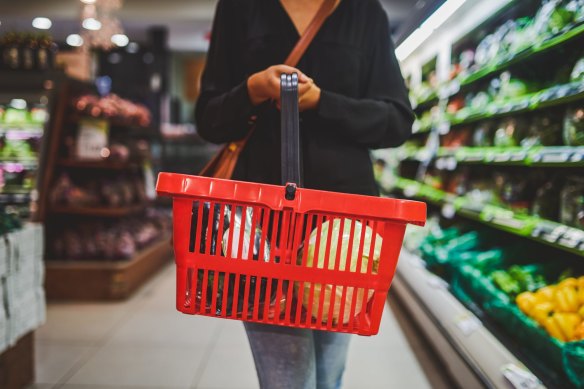
Supermarket home brands have been given a glow-up – and we may have Aldi to thank.Credit: iStock
Other than selling a product at the lowest price point, little else was being offered by home brands a few decades ago.
“Especially for stuff you put in your body or on your skin or stuff you give to your kids, you don’t want to buy the cheapest thing available. You want to buy the best thing you can afford, which is quite different,” said consumer psychologist and Thinkerbell founder Adam Ferrier.
“But [supermarkets] made it as cheap as possible, without having any form of desirability built into the product … and that communicates poor quality.
“Nobody wants just cheap. If you’re going to be cheap, you have to be cheap with some form of consumer benefit.”
As higher housing costs and expensive household bills bear down on Australian families, home brands (also known as own brand, private label or exclusive brands) have evolved and ballooned into a crucial business pillar and a major revenue and sales growth driver for the nation’s biggest supermarkets.
Pantry staples developed by the grocery giants themselves are flying off the shelves more quickly than branded products, particularly as consumers seek value for money. Coles sold $13.5 billion of the stuff in the 2024 financial year, at twice the rate of branded products; Woolworths also experienced a surge in demand for own-brand items at the beginning of this year and has added new products to its popular Macro range. Metcash is also expanding its Black & Gold and Community Co brands, sales of which grew 15.5 per cent over the past year.
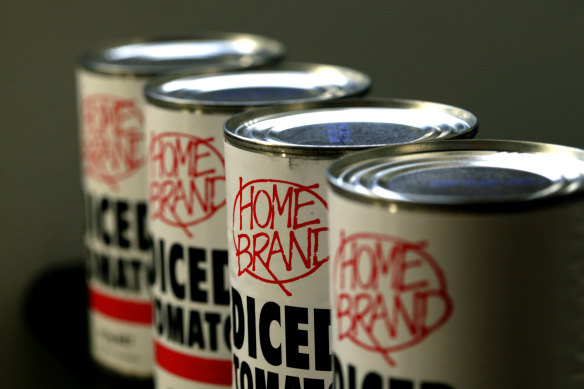
Coles’ Home Brand in 2004.Credit:
It’s a far cry from what supermarket own-brands used to be, as retailers become sharper and more sophisticated about their offering.
“The quality and the price points around home-branded product has improved significantly over 20 or 30 years,” said KPMG consumer and retail national sector lead James Stewart.
“It’s not a radically new strategy in terms of an idea. It’s just a well-developed strategy that’s moved ahead … in leaps and bounds.”
‘It’s not always obvious’
Supermarkets have created different “tiers” of home brands to capture customers shopping across different budgets: Coles offers three ranges (Coles Brand, Coles Finest and Coles Simply) but also operates body care brand KOi, baby care range CUB, specialty coffee range Daley Street Coffee and more. Woolworths has found success through its Macro range, which has a focus on nutrition and natural ingredients, but also competes with multinationals through its pet food brands Apollo, Baxters, Your Majesty and Smitten.
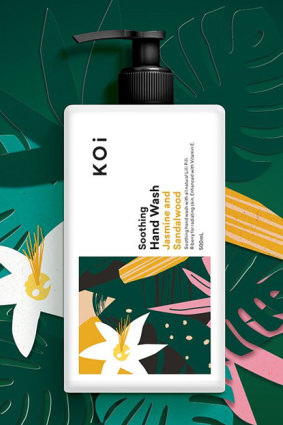
Coles-owned brands, such as KOi, have become more sophisticated.
“It’s not always obvious to customers what are home-branded products and what are not home-branded products,” said Stewart.
You wouldn’t know your KOi body wash or your Daley Street coffee beans have been manufactured by the retailer until you flip it over and read the fine print, which states it is “a trademark under license from Coles Group limited” and lists the same address as Coles’ head office.
Grimmer says these “phantom brands” have increased in number.
“The supermarkets are creating a brand within a brand, the products you don’t know are actually owned by Coles or Woolworths. They’ve got their own brand names and that’s all about creating customer loyalty to those particular brands because, of course, they’re only available in the store that’s making those brands,” she said.
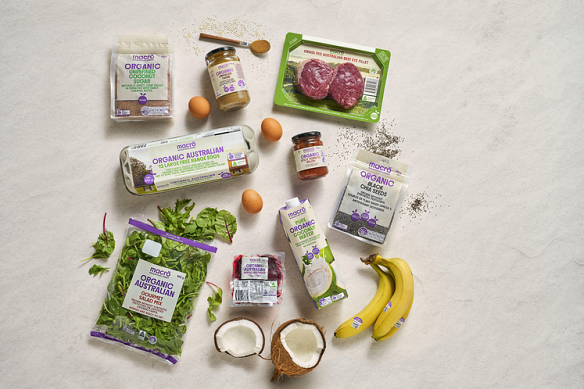
Woolworths’ popular Macro own-brand range.
Supermarkets also stand to profit more by having more say in the supply chain process. A retail industry leader estimates that supermarkets might make gross margins of 35 per cent before overheads, but a home brand item might lift margins to 40 per cent or more.
“Because the supermarkets control the manufacturing, the logistics of those products, I think they realised that there was a gap between the really cheap home brand and the branded products, and that was a gap that they could fill,” said Grimmer.
Aldification
Aldi and Kmart are notable stand-outs for effectively turning in-house brands into a successful business model: Kmart’s brand Anko, which not only has a wide range but is popular for tapping into “dupe culture” by rapidly producing copycat versions of trending items, not only accounts for 85 per cent of Kmart’s sales, but is a major profit engine for $80 billion ASX-listed parent company Wesfarmers.
Meanwhile, more than 90 per cent of Aldi’s product range has been developed by the German supermarket. Ferrier, Stewart and Grimmer all gave credit to Aldi, which entered the Australian market in 2001, for raising the general standards of home brands and making them more palatable.
Rather than selling something at the cheapest possible price at the expense of quality, the current approach appears to flip this on its head: deliver a product that rivals the highly regarded branded version, but at a more affordable price.
“Aldi has helped reinvent home brands for consumers, and they’ve done that by aligning their cheap brands against well-known brands,” said Ferrier. “The consumer feels like they’re buying a version of that.”
Many brands are “premiumising”, according to the advertising creative, commanding a higher price by promising better quality, leaving room for more lower-priced players to capture some market share.
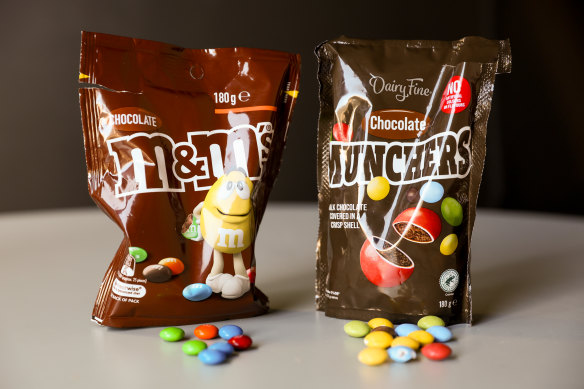
M&Ms and Aldi’s equivalent.Credit: Edwina Pickles
“If you look at the ice cream category, for example, you can be paying $50 a kilo for ice cream, or you can be paying $5 a kilo … That means there’s more value that can be extracted from everybody. The home brands can come in at $20, not $10 a kilo, and still offer a cheaper alternative to the high-end versions, but still make better margins for the retailers,” he said.
“We’re seeing the rise of home brand up the food chain a bit.”
What makes a product feel more premium? Apart from quality itself, this appears in large part to be a marketing exercise: borrow the design “cues” of the higher-end item.
“If you’re going to have a price point that’s sort of midway, then it’s got to look the part,” said Grimmer. “A lot of it’s to do with packaging … it’s all about perception.”
Shelf squeeze
Even though we’re filling our shopping baskets with more home-brand goods, certain products with high brand recognition – such as Coca-Cola or Kraft peanut butter – won’t be something consumers are willing to compromise on.
But supermarkets are increasingly placing their home brand items on shelves at the highly coveted eye level, making branded manufacturers and some smaller brands work harder. Offering customers something made in-house could reduce the need for several branded options, said Stewart.
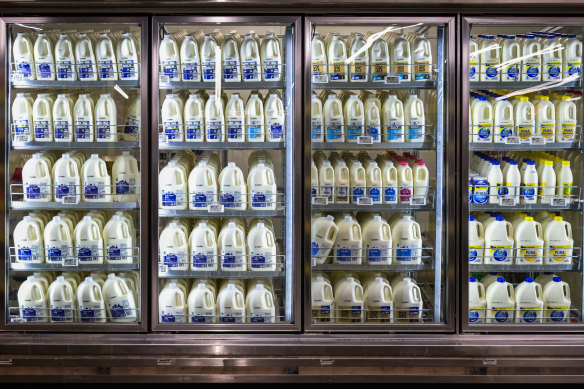
Woolworths’ home-branded milk is easy to access. Credit: Getty Images
“They can then control a category at least inside the four walls of their store,” he said. “If they have a very successful home-branded milk range, they may not need to carry 10 different third-party brands of an equivalent product, they may only need to carry five.”
Grimmer believes the growth of phantom brands is squeezing competition for smaller players and lures the consumer into thinking there’s a lot of choice.
“Smaller suppliers, smaller companies are going to have even more trouble getting their products on the shelf of these big supermarkets because they’ve now got competition, which they’ve always had from the branded products, but now there’s increased competition from the phantom brands,” she said.
But competition is fair play, Stewart believes, and the extra margin retailers make from it can be reinvested back into the business and keep prices down.
“It’s a legitimate model,” he said. “There’s nothing inherently evil in having a really sensible private label strategy.
“What a supermarket or a large discretionary retailer want to do is have a blend of private-label product and third-party products so they can meet demand for customer choice but they can also meet demand for customer value.”
The Business Briefing newsletter delivers major stories, exclusive coverage and expert opinion. Sign up to get it every weekday morning.